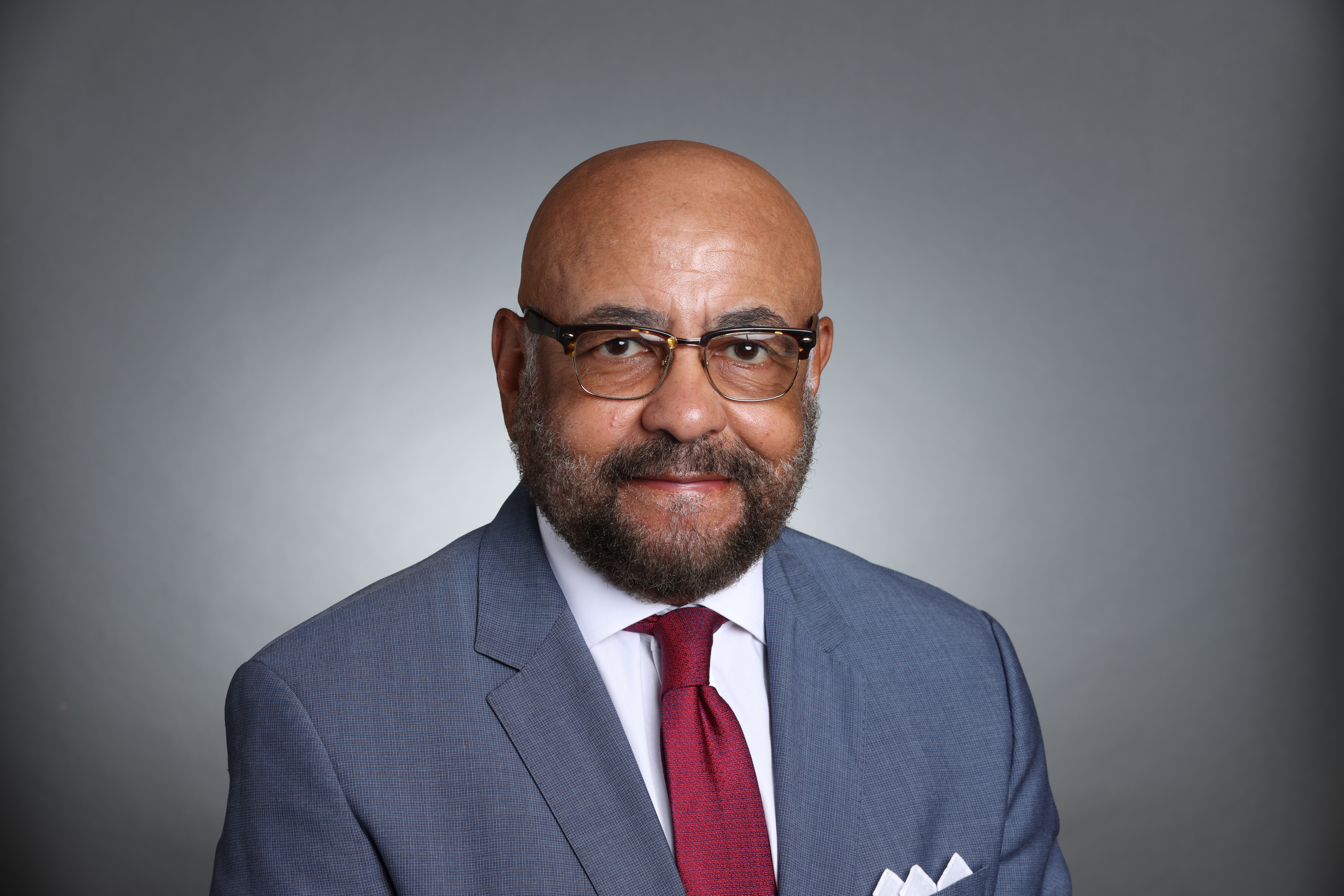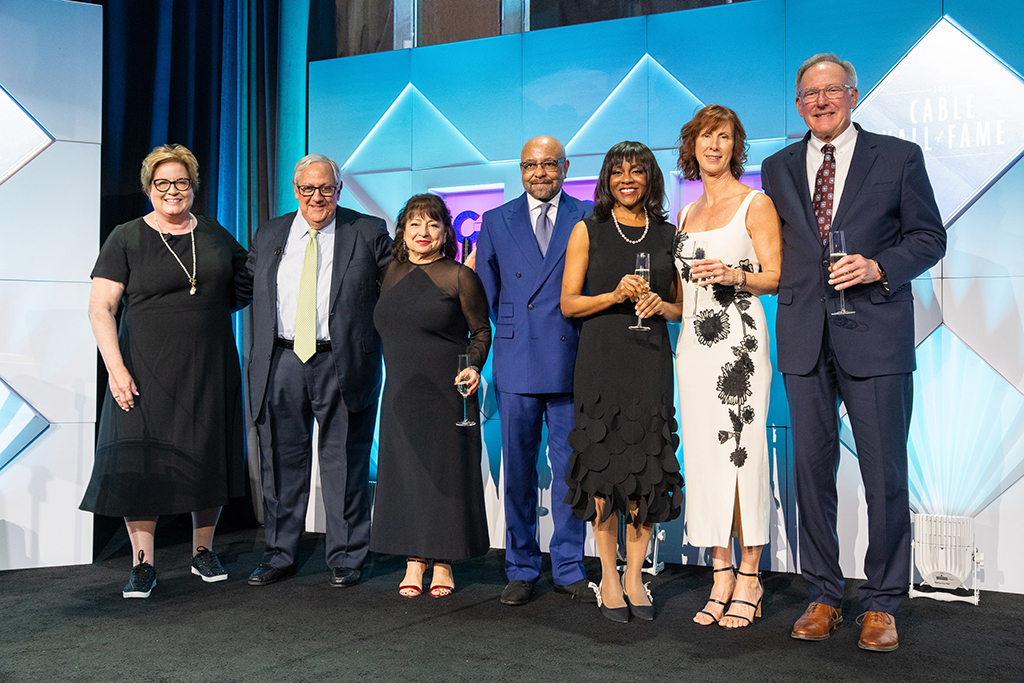Douglas Holloway Stays on the Front Lines of TV Content Distribution: Multicultural Perspectives
Cable Hall of Famer sets sights on streaming industry with two urban-audience targeted services

This past April, veteran television executive Douglas Holloway was inducted into the Cable Hall of Fame, but his influence on the television landscape across a more than 40-year career reaches beyond the cable industry.
Holloway, who began his extensive television career at CBS in 1979, was at the forefront of cable’s innovative years when he joined USA Network in 1983, eventually serving as the network's president of affiliate relations over a 21-year career that also included receiving the 2000 NCTA Vanguard Award for Marketing among other industry honors.
Holloway would venture back into the broadcast arena in 2011 as president of multichannel distribution at Ion Media Networks before moving into the streaming space in 2020 with the launch of two urban-focused services, URBN-TV and UKW Media, targeting multicultural viewers on the emerging digital platform.
Holloway’s influence can also be seen in the television industry’s multicultural efforts, having been an integral part of the development of the National Association for Multi-Ethnicity in Communications (NAMIC) and serving as a mentor to executives of color seeking to make inroads within the television marketplace.
Holloway recently sat down with Multichannel News senior content producer, programming R. Thomas Umstead to discuss his career, the growth of the cable industry and his future plans in the streaming space. The interview was edited for space and clarity.
MCN: When you first started in the cable industry, could you have ever foreseen the growth and the influence the industry would have on the entertainment landscape?
Douglas Holloway: No. When I joined the cable industry, it was in 1980 and there really weren’t any real cable networks to speak of. When I joined USA Network in 1983, [then USA Network president] Kay Koplovitz always pushed us to believe that one day cable would be comparable to broadcast networks, but back then we thought that was a bit of a pipe dream. Even in the ’80s and ’90s, as cable started to grow and flourish, nobody thought it would have the impact that it has had. No one thought that cable would be able to make the kind of money that it has made in profit and finance the kind of quality programming that it is known for. Once it took hold, other technologies like satellite television would end up evolving from the cable business model. Back then no one could have predicted the onset or even the invention of streaming.
Multichannel Newsletter
The smarter way to stay on top of the multichannel video marketplace. Sign up below.

MCN: What was the turning point for the industry in terms of making that turn from questionable business venture to extreme success and profitability?
DH: When the large, urban markets and the small rural markets were able to get cable. Over a five- to 10-year period starting in the late 1980s, the industry signed up a large amount of subscribers, and those subscribers paid affiliate fees. That was really the turning point for cable. The other thing was the technology. Systems went from offering 15 channels to 25 to 60 and eventually hundreds of channels.
MCN: During those early years of cable, there weren’t many people of color working within the industry. This led to the creation of NAMIC, which you had a big hand in developing. How important was the establishment of NAMIC and the movement toward greater representation for the overall growth and success of the industry?
DH: NAMIC goes back to 1981 and to one of my mentors, [Time Warner Cable executive] Nate Garner. Nate, as well as several other visionaries including Barry Washington, saw the need for Black entrepreneurship and Black executives at the system level as well as at the network level. They saw the lack of representation on the broadcast industry side and were determined not to allow it to repeat itself from the cable business since we were there at the beginning. That’s how we began to envision how NAMIC could work within the industry.
What I’ve learned is that the term urban programming isn’t necessarily defined by a specific race or demographic, but it’s a psychographic or lifestyle variable.”
Douglas Holloway
MCN: You were at the forefront of the cable industry’s development, and now you’re part of the evolving streaming business having launched two, Internet-based services. What is your vision for the networks?
DH: Through my years working for a number of different television networks, I’ve seen a lot of research, and what I’ve learned is that the term urban programming isn’t necessarily defined by a specific race or demographic, but it’s a psychographic or lifestyle variable. Urban meant shared lifestyle experiences and attitudes, so if you programmed to that urban lifestyle variable, you could have a business proposition. The population has become more multicultural with the growth of Blacks, Hispanics and Asians in this country. So what I’m doing with my two services is programming those genres that I know have shared interests by the urban, multicultural audience.
So I have programming that appeals to different audiences, but with an urban sensibility. I’d say 60% to 70% of my content is original that I’ve licensed from independent creators, that covers all genres from feature films, animation, webisodes, documentaries, long-term features and some music.
MCN: What do you feel has been your greatest accomplishment within the industry?
DH: I think it’s been my involvement, creation and building of NAMIC and seeing it help create opportunities within the industry. The second thing I would say is the creation of the Sci-Fi Channel (now Syfy). I identified the concept for the channel while I was at USA when we were looking for new networks to launch back in the early 1990s. I also did one of the first deals with DirecTV to get the channel launched. I think we eventually launched with about 10 million to 12 million homes, which was big at that time.
MCN: Do you think that niche cable networks like Syfy can continue to exist and prosper in the fast evolving television marketplace?
DH: Yes, I think those networks will continue to exist. It’s almost like when television came along, people thought that movies were going to go away. They may not remain at the size they once were, but I think they will survive on the linear side and eventually migrate to the non-linear side, possibly as a fast channel or an app version. Established brands like that will be able to reach across all platforms.
R. Thomas Umstead serves as senior content producer, programming for Multichannel News, Broadcasting + Cable and Next TV. During his more than 30-year career as a print and online journalist, Umstead has written articles on a variety of subjects ranging from TV technology, marketing and sports production to content distribution and development. He has provided expert commentary on television issues and trends for such TV, print, radio and streaming outlets as Fox News, CNBC, the Today show, USA Today, The New York Times and National Public Radio. Umstead has also filmed, produced and edited more than 100 original video interviews, profiles and news reports featuring key cable television executives as well as entertainers and celebrity personalities.

